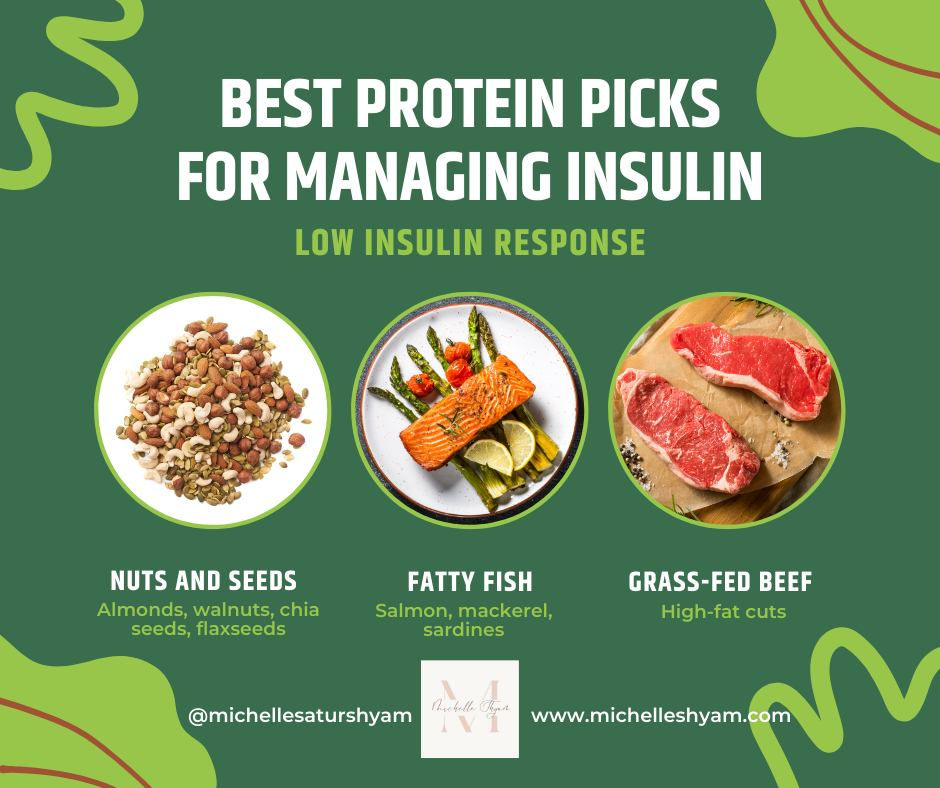Intermittent Fasting: What Works, What Doesn't
- Michelle Shyam

- Oct 20
- 6 min read
While Intermittent Fasting is not a 'diet' per se, but rather a way-of-eating or lifestyle, it is very promising for weight loss and increasing insulin sensitivity. However, there are many versions or variations that people follow when it comes to Intermittent Fasting. This post is about the 4 popular ones:
Lean Gains
Eat Stop Eat
Warrior Diet
5:2 (or modified Alternate Day Fasting)
What is Intermittent Fasting?
Intermittent fasting is nothing but time-restricted eating, marked by two phases or states - the fed state and the fasted state. The fed state otherwise known as the eating window is the time during which calories are consumed. The fasted state is when no calories are eaten. Typically, when we are sleeping we are fasting!

What is Lean Gains?
Started and promoted by Martin Berkhan in his book titled "Lean Gains", he proposes the 16:8 pattern of Intermittent fasting for maximum results with fat loss while preserving lean body mass (muscle sparing). So, this means, 8 hours is the eating window and 16 hours is the fasting window. People who follow this diet, mostly delay their breakfast to 11 a.m and wind up with the last meal before 7 p.m. They may squeeze in 2-3 meals depending on their calorific needs. Those who are actively looking at gaining muscle and losing fat (aka shredded/ripped), do better on 3 meals in this plan so as to be on a calorie surplus.
Lean Gains, is a beginner level of IF diet I would say, as it is fairly easy to delay breakfast by having a cup of black coffee in the morning.
What is Eat-Fast-Eat?
Brad Pilon proposes E-S-E pattern of weekly fasts, where you eat normally for 5-6 days a week and do 24hour fasts on two days of the week. No calorie / macros counting or restriction is required. But folks who eat junk or typically high carb diets may not do well on this plan as to be able to do a 24hour fast effectively (Without a headache) requires one to be insulin sensitive or fat-adapted.
I would say, this form of IF works well for those who are relatively metabolically healthy and can oscillate between glucose and ketones for fuel. Beginners will find this difficult. However this diet works well when one wants to 'purge' or heal the gut, especially after a vacation.
What is the Warrior Diet?
As the name goes, this diet is instinct based and is rooted in a warrior-like-approach to eating, when warriors used to hold guard and stay alert during the day, fighting battles - but return home or to camp in the night for a grand feast. Ori Hofmekler describes this diet as having two states - undereating and overeating states. During the day warriors munched on veggies, fruits and that is what he calls "undereating", as it triggers the sympathetic system, heightening alertness and focus. At night, the feast was largely meat, grains, fats (no counting calories) and this triggered the parasympathetic system. Hofmekler was of the opinion that this way of eating kept warriors strong and well-built.
I do think, this form of IF works for some people even today - eat light during the day (eggs, fruit, veg) and heavy at night. But I am not a fan of this method of fasting.
What is 5:2?
This diet was proposed by Dr. Mosley who was obese himself with high cholesterol. He experimented on himself first before it straightened it out making tweaks for his patients. It is a modified version of "Alternate Day Fasting" that was popularized by Dr Krista Varady. In 5:2, Mosley proposed that 5 days a week one is to eat normally and two days a week one is to eat only 500kc a day (for women) and 600kc a day (for men). Doing this by default puts you in a calorie deficit, but requires one to necessarily count calories! It works for folks who want to 'cut the cake and have a piece of it.'
I would say this is beginner-level of intermittent fasting. It is techically not "fasting" but Dr.Mosley believes that 500kc which should primarily comes from lean proteins like eggs, whey, chicken and dairy can be considered as 'fasting'. I like the idea of toggling between high and low calories in a week, but it works best if the food eaten on those 5 days are healthy as well, for weight to drop off. It is afterall very easy to overeat on those 5 days and sabotage the effects of a clean 5:2.
Pitfalls of fasting:

Fasting increases the risk of eating disorders: Using data from 496 adolescent girls followed over 5-years, results confirmed that only 23% of participants with elevated dietary restraint scores reported fasting. Furthermore, fasting generally showed stronger and more consistent predictive relations to future onset of recurrent binge eating and threshold/subthreshold bulimia nervosa over 1- to 5-year follow-up relative to dietary restraint. So it is safe to say that fasting is a risk factor for bulimic pathology. https://www.ncbi.nlm.nih.gov/pmc/articles/PMC2850570/
Fasting increases cortisol: When it comes to fasting, there are concerns on muscle loss, ketosis, and electrolyte imbalance. Of particular concern is the effect of intermittent fasting on hormonal circadian rhythms. Studies done on early TRF (time restricted feeding) between 8:00 AM–2:00 PM for 4 days showed slightly but significantly increases serum cortisol levels in the morning in humans. These results imply that intermittent fasting increases the level and frequency of cortisol secretion. Cortisol is our stress hormone produced largely by the adrenal glands. https://www.ncbi.nlm.nih.gov/pmc/articles/PMC8419605/ So, my usual advice and approach to clients who are already facing adrenal fatigue or cortisol insufficiency is to NOT follow strict fasting windows. This is why fasting is not needed for menopausal women as the adrenal glands also take up the work of estrogen production along with the adipose tissues (the majority of estrogen production before menopause is done by the ovaries). When the adrenal glands are overworked or overstressed, this leads to adrenal fatigue, to put it simply.
Fasting and insuling levels: In humans, intermittent fasting decreases plasma insulin levels and improves insulin sensitivity. A study on Alternate-Day-Fasting (ADF - similar to 5:2 Diet) for 22 days is said to have dramatically suppressed insulin secretion by 50%. In studies involving 5:2 diets for 3 or 6 months, blood insulin levels and insulin resistance were significantly reduced. These changes were greater than those induced by calorie restriction although the two diets induced comparable weight loss. A recent study on 8-week TRF (time restricted fasting - like 16:8) reported similar results. https://pubmed.ncbi.nlm.nih.gov/15640462/ It is important to note that while, having insulin low is desirable for weight loss, having it very low can have adverse effects as the primary role of insulin is in driving glucose to the cells for energy. In the event of very low serum insulin levels, blood glucose will remain elevated. Insulin also maintains electrolyte and fluid balance in the body. People with Type 1 Diabetes (which is an autoimmune condition where the Pancreas produces little to no insulin) are advised not to follow Intermittent Fasting.
Fasting affects the Thyroid: A study trial reported that serum T3 decreased up to 55% after 24 hours of fasting. Contrary to serum T3, TSH levels remained unchanged after fasting. Short-term (4 weeks) and long-term (more than 6 months) ADF (alternate day fasting) diets reduced circulating T3 without any change in TSH level. The same result was obtained from another 8-hour TRF (time restricted feeding, like 16:8)study for 8 weeks. https://pmc.ncbi.nlm.nih.gov/articles/PMC8419605/ A few studies evaluated the effect of intermittent fasting on thyroid abnormalities. In one study, 6-month ADF did not affect either free T4 or TSH in subclinical hypothyroidism subjects. However, Ramadan studies suggested the need for higher doses of levothyroxine, a globally prescribed drug for hypothyroidism, in primary hypothyroidism patients because their serum TSH levels exceeded normal ranges after the Ramadan fast. Therefore, people with thyroid abnormalities should consult a physician about the dose and timing of drug intake during intermittent fasting. https://pubmed.ncbi.nlm.nih.gov/29975574/
Fasting decreases androgens: Results of a few studies suggest that intermittent fasting decreases androgen markers (i.e., testosterone and the free androgen index (FAI)) while increasing sex hormone-binding globulin (SHBG) levels in premenopausal females with obesity. This effect was more likely to occur when food consumption was confined to earlier in the day (eating all food before 4 pm). In contrast, fasting did not have any effect on estrogen, gonadotropins, or prolactin levels in women. As for men, intermittent fasting reduced testosterone levels in lean, physically active, young males, but it did not affect SHBG concentrations.
On the one hand, fasting may prove to be a valuable tool for treating hyperandrogenism in females with polycystic ovarian syndrome (PCOS) by improving menstruation and fertility. On the other hand, fasting may be shown to decrease androgens among males, which could negatively affect metabolic health and libido. That said, more research is needed to confirm these findings. https://pubmed.ncbi.nlm.nih.gov/35684143/
In conclusion:
Intermittent Fasting can be a powerful tool for improving metabolic health, enhancing insulin sensitivity, and supporting fat loss—but it’s not a one-size-fits-all solution. The benefits depend greatly on which variation you choose, your current hormonal and adrenal health, and how well it fits into your lifestyle. Fasting can just as easily become counterproductive if done rigidly or without understanding your body’s signals. For most people, the sweet spot lies in finding a sustainable rhythm—one that supports nourishment, energy, and balance, not deprivation.




Comments